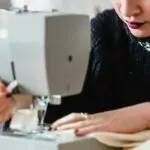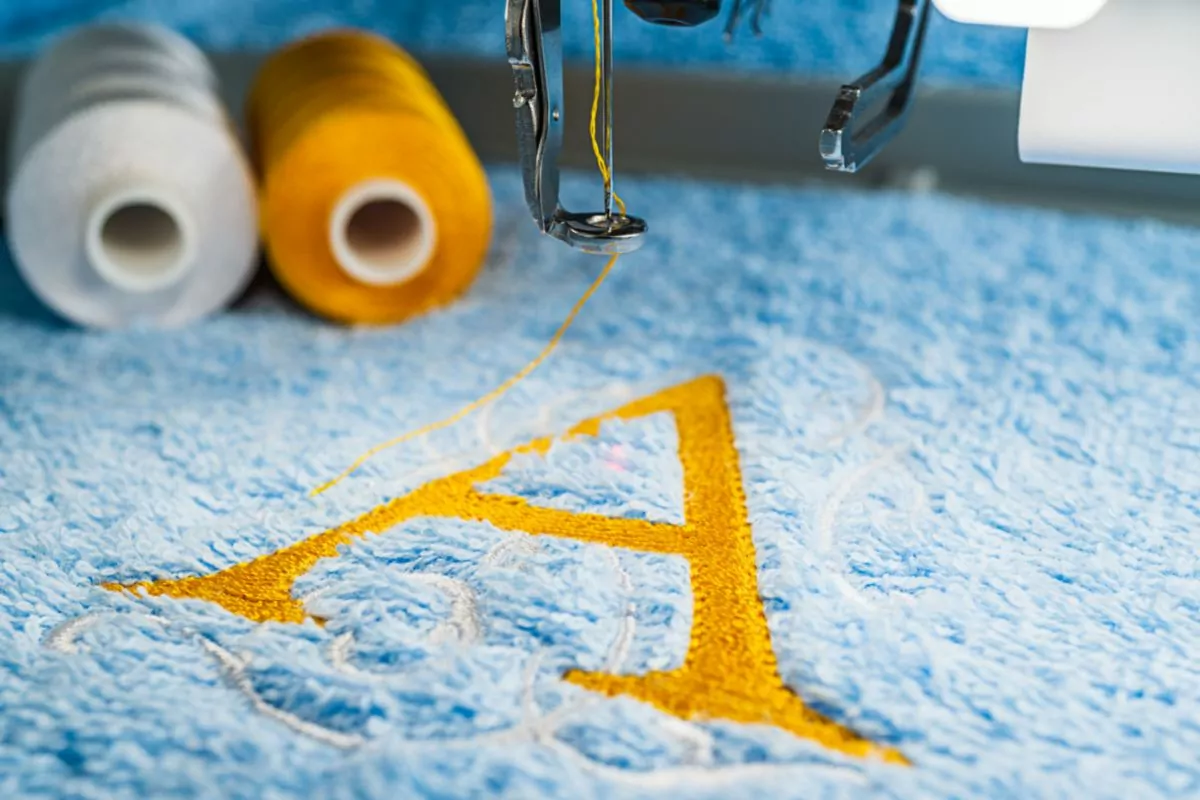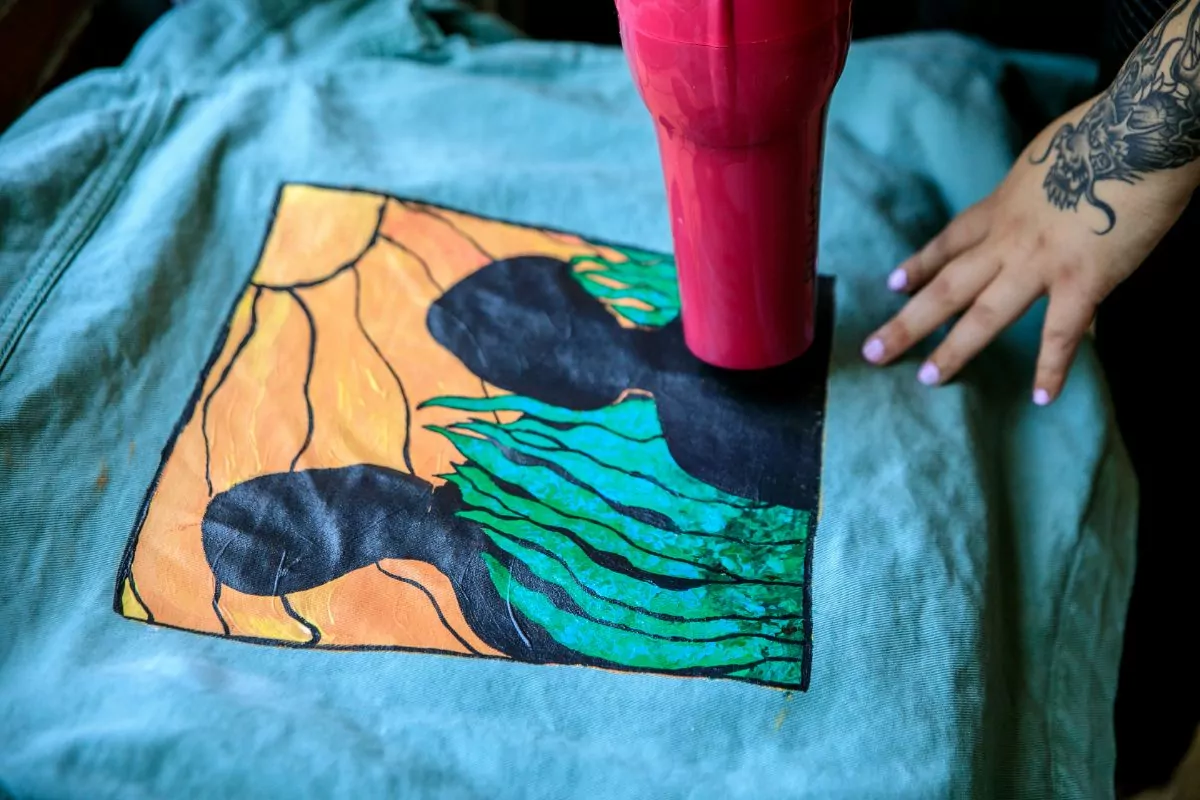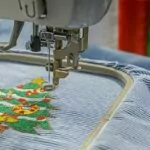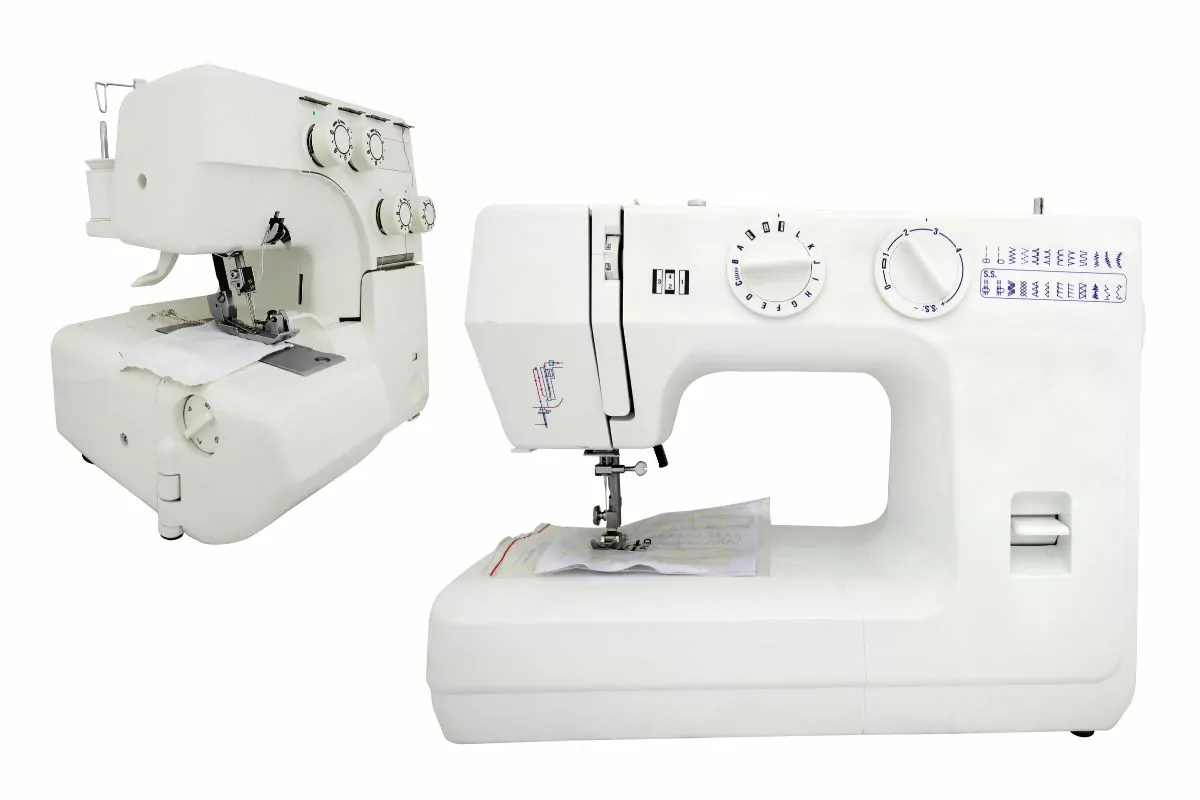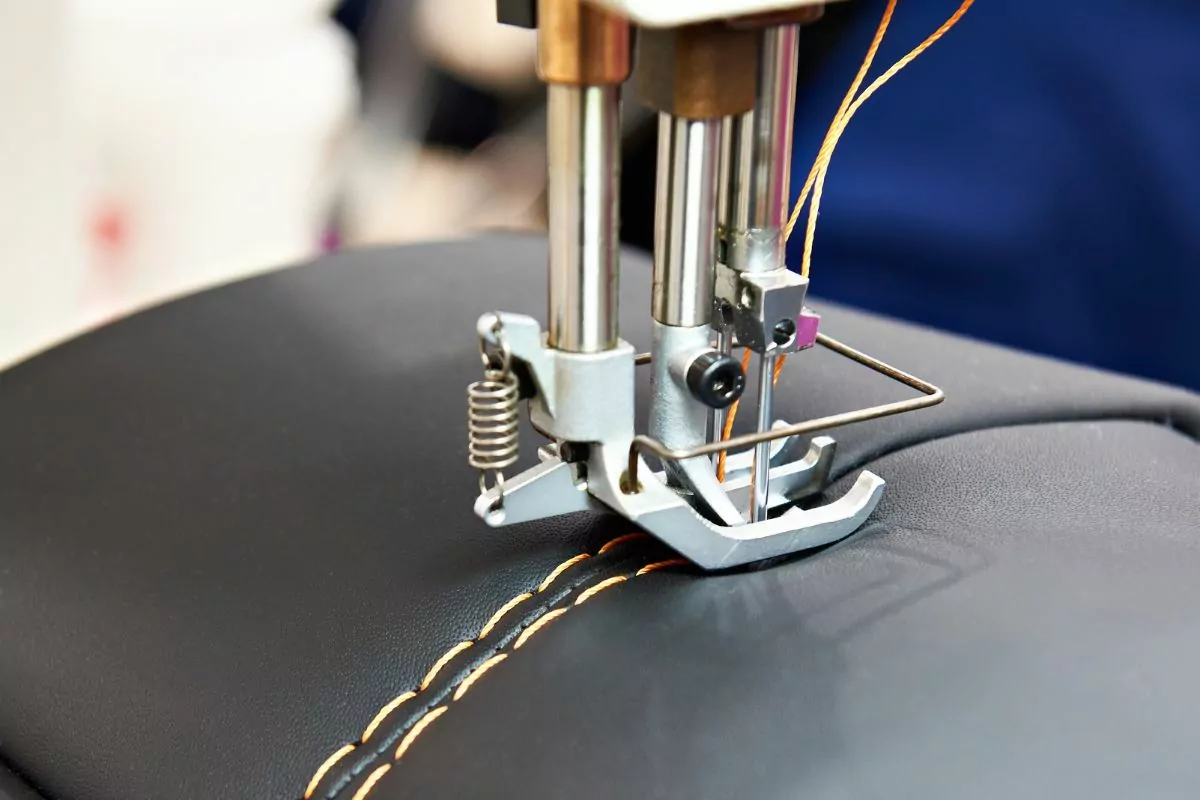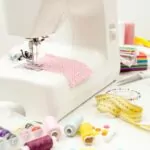Creating serger stitches, either by hand or with an overlock machine is something that takes time to learn. This sewing method is a surefire way to create high-quality, finished garments, but it can be tough to learn for a beginner.

With so much information out there online, you might find yourself overwhelmed with where to start.
So let’s say you’re struggling with serger stitches and want to learn some simple tips to help you out on your journey. If this sounds like you, then you’ve arrived at the right place!
In this article, we’re going to give you a list of 10 simple serger tips suitable for the rank of ‘beginner.’ We’ve separated these into 5 tips for learning to overlock stitch by hand, and 5 tips that will help you use an overlock or ‘serger’ machine.
We’ve also included a short FAQ to define some of the more technical terms in this article.
What Is Serger Stitching?
Serger stitching is synonymous with the term ‘overlock stitching’ (see also “Complete Serger Dictionary“), this is a technique used in sewing to create clean and finished edges on the fabric while also helping to prevent fraying .
This creates garments that look professional and high quality, which is why it’s so often used in the fashion industry.
Serger stitching seals any raw edges of the fabric you’re working on, which helps to stop any kind of unraveling, and helps to protect the finished garment against everyday wear and tear.
This is especially important for more frail fabrics and can keep them formed and durable for long periods of time.
There are many different types of overlock stitches, including a 4-thread overlock, 3-thread overlock, and 2-thread overlock, each of which can be used for different types of fabrics and sewing projects.
This versatility means that you can use serger stitching on a wide range of projects, from lightweight cotton to heavier fabrics like denim and canvas.
10 Simple Serger Tips For Beginners
By Hand
In the first part of our list, we’re going to cover some tips you can follow to sew by hand.
If you already have a serger (overlock machine) then you can skip to the second part of this list where we’ll be going into detail with some tips on how to use these machines effectively.
1. Choose The Right Needle
A sharp needle is crucial for hand overlock stitching, as it will make the process easier and result in a neater stitch. Use a universal needle or a denim needle for the best results.
2. Select The Right Thread
A strong and flexible thread, such as cotton or polyester, is essential for hand overlock stitching to prevent tangling and breakage.
3. Adjust The Stitch Length
The length of your stitch will affect the look and strength of your hand overlock stitch. A shorter stitch length will create a stronger stitch, while a longer stitch length will result in a looser stitch.

4. Practice On Scrap Fabric
Before starting on a project, practice your hand overlock stitching on scrap fabric to get a feel for the process and to test out any changes you make to the stitch length.
5. Take Your Time
Overlock stitching by hand can be time-consuming, especially for a beginner, but it is important to take your time and make sure your fabric is aligned correctly before beginning the stitch.
This will help prevent mistakes and ensure a professional-looking result.
By Overlock Machine
Now let’s take a look at some of the most important tips you can use with the help of a serger or overlock machine (see also “Best Tips For Sewing Knits With Serger And Sewing Machine“).
These are generally considered to be much faster and easier than learning to serger by hand, but there are still some important things to keep in mind.
6. Use The Right Fabric
Heavy-duty fabrics like denim, tweed, or canvas might not be suitable for your serger machine. This is because overlock stitching is not generally suggested for these fabrics.
If you try to use something like leather in your overlock machine, you could run the risk of damaging your machine or the fabric.
7. Adjust The Tension
The tension on your overlock machine controls the amount of thread used in the stitch. Too much or too little tension can result in poor stitch quality, so make sure to adjust the tension until you get the desired result.
8. Use The Correct Setting
Overlock machines have several different stitch options, including a 4-thread overlock, 3-thread overlock, and 2-thread overlock.
Most common machines (even low-end models) will have these options for you to explore. Choose the stitch that is appropriate for your project and the type of fabric you are working with.
9. Finish Any Raw Edges
Overlock stitching is designed to prevent fraying and create a finished edge on your fabric. Make sure to overlock all raw edges before beginning your project to ensure a clean and polished finish.
10. Use A Stabilizer
A stabilizer, such as a tearaway or cutaway, can help prevent your fabric from stretching and warping while you overlock stitch. This is especially important for delicate fabrics like silk or satin.
Final Thoughts
So that was our list of 10 simple tips to help beginners learn to serger stitch (see also “Serger Tips We Couldn’t Ignore“). By following these, you can easily improve your overlock stitching and take your sewing projects to the next level, achieving a high standard of finish and professionalism.
Overlock stitching is a versatile and essential tool for many people who work with fabric, but it will take some time to master—whether you choose to use your hands or a serger machine.
We hope that this guide has helped you and that you’re now more confident about how to serger stitch. If you still have some questions, check below for our short FAQ section. We wish you the best of luck!
Frequently Asked Questions
Can A Serger Be Used For All Kinds Of Sewing Projects?
Serger stitching is primarily a way to finish seams and treat rough edges, but it’s not suitable for more complex projects, these will instead require many different stitching techniques.
Can Sergers Be Used For Hems?
Sergers are a great choice for creating both secure and neat hems, especially when using lighter fabrics.
- How To Sew Fabrics Together - June 5, 2023
- How Many Stitches Per Inch? - June 5, 2023
- How Long Does It Take To Sew A Dress? - June 5, 2023


